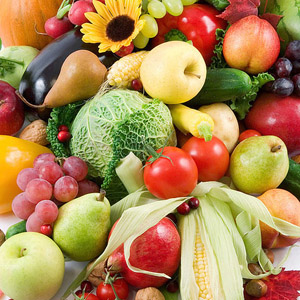This article has reported the association between dietary fiber intakes and the risk of cardiovascular disease, that it has been shown that total fiber intakes, cereal fiber intakes and fruit fiber intakes have inverse association, in contrast, vegetable fiber has no association.
In the Dietary Reference Intakes for Japanese 2015 edition, they have described “If they would intake 24 g/d or greater of dietary fiber, they could avoid the risk of coronary death.”, but I couldn’t find the describe in the original article.
Dietary Fiber and Risk of Coronary Heart Disease
A pooled Analysis of Cohort Studies
Mark A. Pereira, PhD; Eilis O’Reilly, MSc; Katarina Augustsson, PhD; Gary E. Fraser, MBChB, PhD; Uri Goldbourt, PhD; Berit L. Heitmann, PhD; Goran Hallmans, MD, PhD; Paul Knekt, PhD; Simin Liu, MD, ScD; Pirjo Pietinen, DSc; Donna Spiegelman, ScD; June Stevens, MS, PhD; Jarmo Virtamo, MD; Walter C. Willett, MD; Alberto Ascherio, MD
Background Few epidemiologic studies of dietary fiber intake and risk of coronary heart disease have compared fiber types (cereal, fruit, and vegetable) or included sex-specific results. The purpose of this study was to conduct a pooled analysis of dietary fiber and its subtypes and risk of coronary heart disease.
Methods We analyzed the original data from 10 prospective cohort studies from the United States and Europe to estimate the association between dietary fiber intake and the risk of coronary heart disease.
Results Over 6 to 10 years of follow-up, 5249 incident total coronary cases and 2011 coronary deaths occurred among 91 058 men and 245 186 women. After adjustment for demographics, body mass index, and lifestyle factors, each 10-g/d increment of energy-adjusted and measurement error–corrected total dietary fiber was associated with a 14% (relative risk [RR], 0.86; 95% confidence interval [CI], 0.78-0.96) decrease in risk of all coronary events and a 27% (RR, 0.73; 95% CI, 0.61-0.87) decrease in risk of coronary death. For cereal, fruit, and vegetable fiber intake (not error corrected), RRs corresponding to 10-g/d increments were 0.90 (95% CI, 0.77-1.07), 0.84 (95% CI, 0.70-0.99), and 1.00 (95% CI, 0.88-1.13), respectively, for all coronary events and 0.75 (95% CI, 0.63-0.91), 0.70 (95% CI, 0.55-0.89), and 1.00 (95% CI, 0.82-1.23), respectively, for deaths. Results were similar for men and women.
Conclusion Consumption of dietary fiber from cereals and fruits is inversely associated with risk of coronary heart disease.
Arch Inern Med. 2004; 164: 370-376
The Dietary Reference Intakes for Japanese (2015 edition) Carbohydrate (pdf)
The Dietary Reference Intakes for Japanese (2010 edition) Carbohydrate (pdf)

